Can Alexa Cycle Color of Hue Lights
We're big fans of the Philips Hue lighting system and all the cool tricks you can do with it — from syncing your lights with movies playing on the big screen, to having them respond to thunderstorms outside, to using them to scare off burglars.
If you've got some Philips Hue bulbs installed at home then you're probably familiar with the basics and the capabilities of the recently revamped mobile apps... but did you know Philips is also working on a number of experimental features under the umbrella of Philips Hue Labs?
These features aren't completely ready for primetime — and might never make it into the official apps — but they do give you new options for playing around with your Philips Hue system, and we've picked five of our favourites.
The best way to enable these extras are through the Philips Hue mobile apps: go to the Explore tab and then tap Hue Labs.
1. Cycle colors with Living Scenes
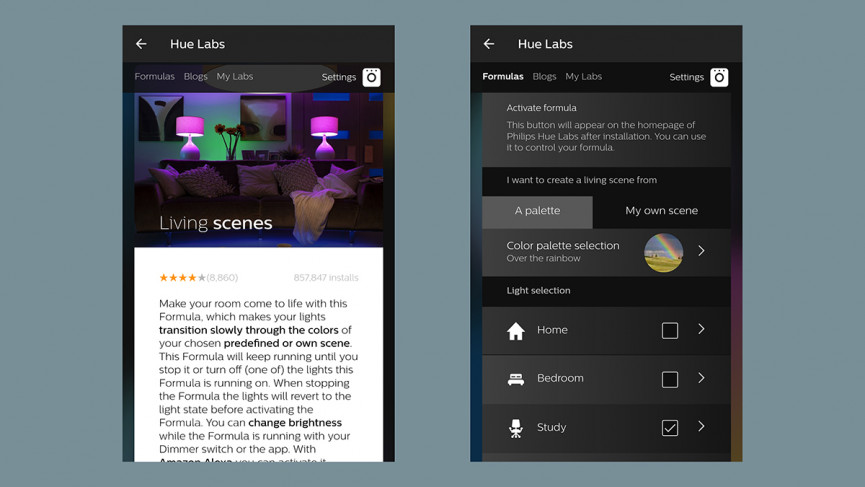
One feature that is lacking in the official Philips Hue apps is the ability to cycle through colors automatically. Living Scenes can make that happen, so you can have shades of color slowly changing until you turn a bulb off or change its setting.
Once you've enabled the Labs feature, you need to set a palette — you can pick either one of the preset pictures or configure your own — then choose the bulbs you want it to affect, the speed of the transitions, and the brightness of the colors. You'll be left with a Living Scenes button on the Hue Labs page you can tap to start and stop the routine.
When the formula stops, your lights go back to their previous state. It works with Alexa too, if you've connected your bulbs up to your Echo or similar device: just say "Alexa, turn on Living Scenes" and the configuration you most recently set starts running again.
2. The Light Schedules With Randomness formula
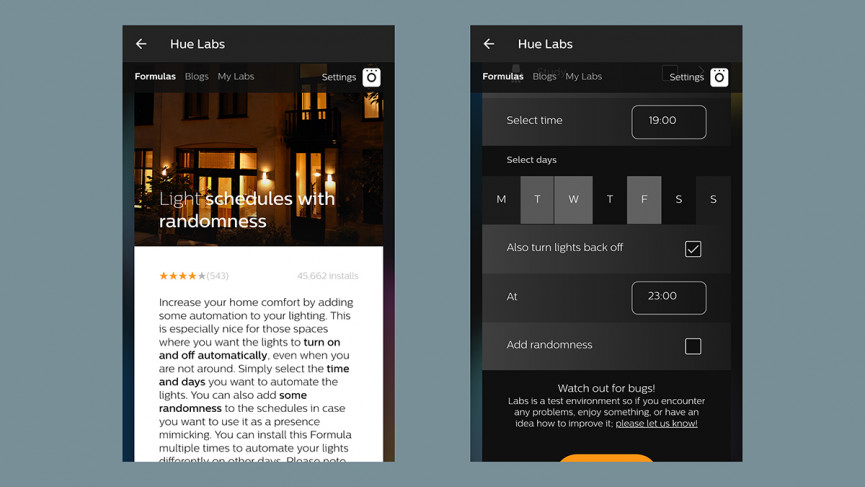
The name of this Hue Labs formula says it all really: it adds some extra options and a randomness setting to the usual scheduling function in your Philips Hue app, and you can even set different schedules for different days. It's perfect for creating the illusion that someone's at home while you're on holiday.
Once you've activated the formula, you can set the start and stop times, the days of the week they're applied, and introduce a little bit of unpredictability with the Add randomness switch (the variations can go from one second to two hours). When you're finished, you get a new button to tap on the Hue Labs screen to enable the routine.
Note that these timings don't appear in the regular Routines section of the Hue app — if you want to make changes or disable the schedules that you've set up, you need to go back into the Hue Labs section of the app and configure the schedules from there.
3. Disable a sensor with Sensor Snooze
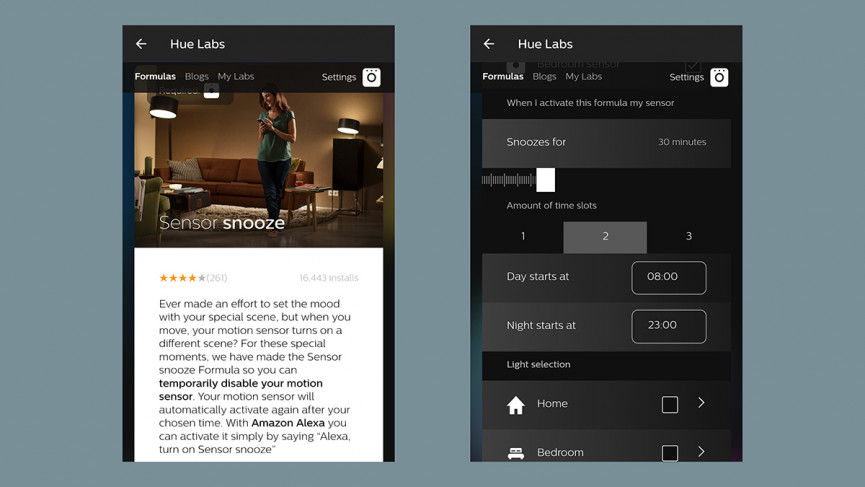
The capabilities of the Philips Hue Motion Sensor are fine, on the most part, but when the sensor is active, it's active — that means if motion is supposed to trigger a night light, it will do that whether or not the lights are already turned on, which often isn't ideal.
Sensor Snooze goes a long way to fixing that. Turn it on, and your motion sensor is temporarily disabled, so you can walk in front of it as much as you want without suddenly sending your lights into a different scene. You need to set the bulbs affected, and the snooze time, and you can also set a certain time frame (say an hour) after motion is detected that the sensor snoozes automatically.
Unlike several Hue Labs routine, this one rather conveniently switches off when the snooze time is over. You can also say "Alexa, turn on Sensor Snooze" if you've got an Alexa device connected up to your Philips Hue smart lights.
4. Have the lights fade out at bedtime
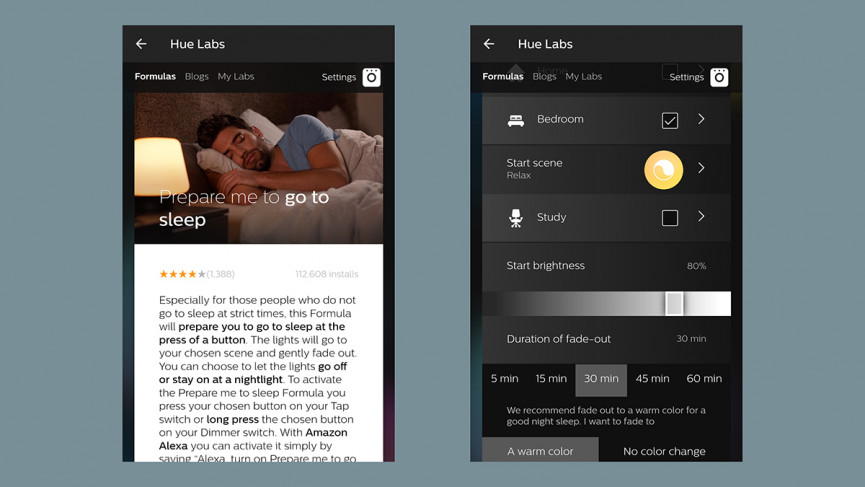
Something Philips Hue lights can't do very well by default is slowly fade out on demand — you normally have to set a fixed time for this to start, but you might not always go to bed at the same time. A routine in Hue Labs called Personal Go To Sleep aims to fix this.
Enable the routine, and pick the lights that it controls, then set the starting scene, the starting brightness, and the time it should take to slowly fade out. When the fade time is over, you can choose to turn the selected lights off completely, or switch to a night light.
You can start the routine using a button on the Hue Labs page and of course it turns off automatically after the period you've specified. It's Alexa-enabled too, so the command "Alexa, turn on Personal Go To Sleep" is enough to get it started if Alexa is already controlling your Philips Hue lights.
5. Turn your lights into candles with Candlelight Romance
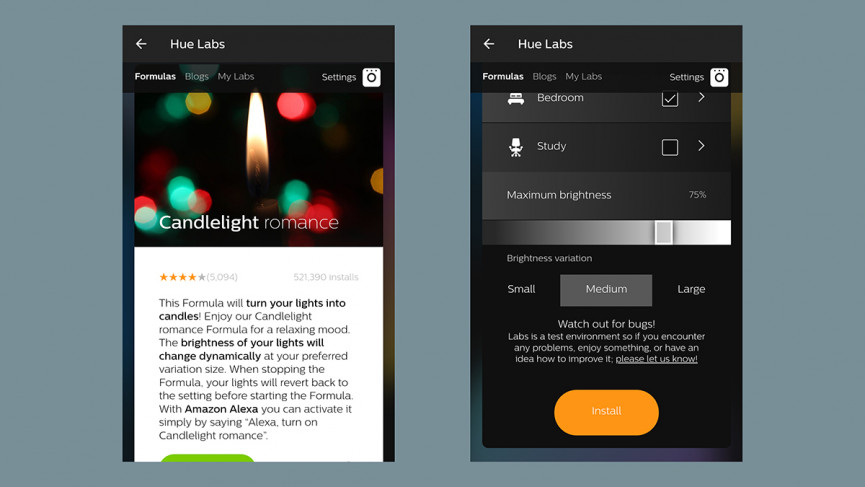
You'll notice that several third-party apps can create a candlelight effect with your Philips Hue bulbs, and there's a Hue Labs effect to match called, appropriately enough, Candlelight Romance (though it works for chilling out or anything else you want to do by candlelight as well as romancing).
Enable the Candlelight Romance routine and the Hue app asks you to specify which bulbs you want to control, how fast you want the candlelight effects to move, and the maximum brightness you'd like your bulbs to go to. With that done you'll see a new button on the Hue Labs screen to start and stop the effect.
Again, when the routine is stopped, your chosen lights go back to the state they were set to previously. This is another routine you can enable through Alexa, if there's an Alexa-enabled device connected to your Hue lights: say "Alexa, turn on Candlelight Romance" and the routine begins.
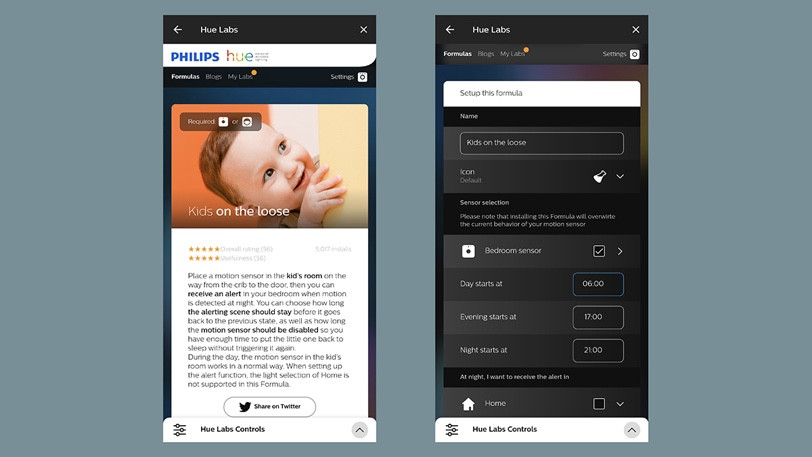
6. Keep youngsters safe with Kids On The Loose
Got youngsters at home who like to roam around after lights out? This particular Hue Labs routine needs a motion sensor to work, and can activate a particular scene whenever that motion sensor is triggered – so maybe put it somewhere between where your kid is sleeping and the bedroom door.
The idea is that your lights flash (or do anything else you want them to) when your child is up and about, and there's then a certain period of time when the routine is disabled again, giving you the chance to put the youngster back to bed again without triggering the same lighting scene yourself.
It's perfect if your little ones tend to wander around, and during the daytime hours you can have the Philips Hue motion sensor operate as normal, so your lights are constantly going on and off with the movement that happens before bedtime.
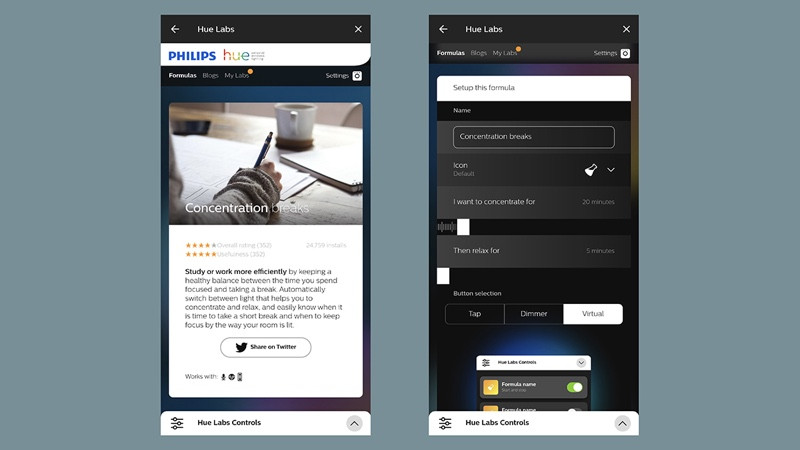
7. Stay focused (and unfocused) with Concentration Breaks
Most of us could probably use some help keeping focused on particular tasks, and the Concentration Breaks entry in the Hue Labs list fits the bill: it's a timed formula that will alternative between light that helps you concentrate and light that helps you relax, and you can set your periods of study and rest as required.
You can get the formula to work with a software button that you tap on your phone, or through a physical Philips Hue button or dimmer, so as soon as you're ready to get into the concentrate and relax cycle you can get started. The timings are up to you and of course any of your Philips Hue lights can be involved.
Part of the appeal of this particular Hue Labs formula is in its simplicity, so you're not going to be overwhelmed with options here. You might well find it better for your levels of focus than simply setting a timer or alarm, or relying on yourself to remember when you need to take a break.
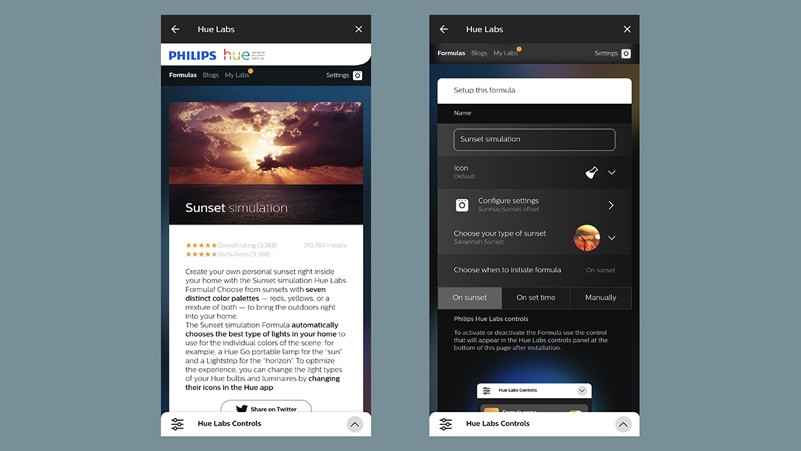
8. Go natural with Sunset Simulation
Bring some of the wonder of nature into your home with Sunset Simulation, which can combine reds and yellows across the lights of your choice to create a wonderfully soothing sunset effect indoors.
Even better, the formula automatically chooses the most suitable Philip Hue lights out of the ones you've got available to achieve the sunset effect: it might use a Hue Go for the artificial sun, for example, and a Lightstrip for the artificial horizon.
You can sync the effect with the actual sunset time in your part of the world, offset it by a few minutes in either direction, or set your own time every day for the sunset to activate. You can also choose the time the sunset takes and the configure the colors used.
Can Alexa Cycle Color of Hue Lights
Source: https://www.the-ambient.com/features/best-philips-hue-labs-add-ons-1003